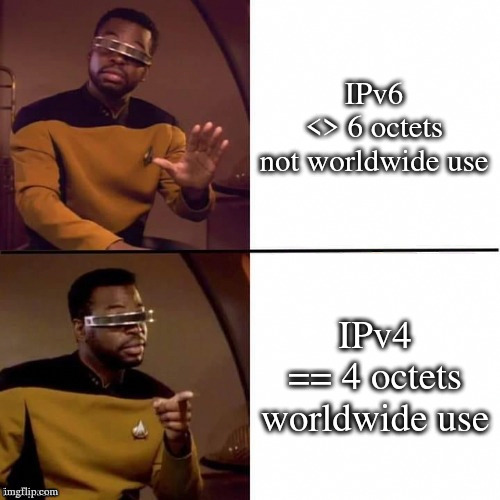this post was submitted on 19 Jun 2024
315 points (85.6% liked)
Programmer Humor
19623 readers
2 users here now
Welcome to Programmer Humor!
This is a place where you can post jokes, memes, humor, etc. related to programming!
For sharing awful code theres also Programming Horror.
Rules
- Keep content in english
- No advertisements
- Posts must be related to programming or programmer topics
founded 1 year ago
MODERATORS
you are viewing a single comment's thread
view the rest of the comments
view the rest of the comments

That is not how it works. You can have a home network on ipv6. And it can reach all of ipv4 via nat ( just like ipv4 do today). A net with only ipv4 can not reach any ipv6 without a proxy that terminst the v4 connection and make a new v6 connection. since ipv6 is backwards compatible. But ipv4 is naturally not forwards compatible.
Also it is the default deny of the stateful firewall that always coexist with NAT, since NAT depends on that state, that is the security in a NAT router.
That default deny is not in any way dependant on the NAT part.
Interesting, I thought NAT could handle it...
If there is a ipv6 service online. That you want to reach from a v4 only client. You can set up a fixed 1:1 nat on your firewall where you define a fake internal ipv4 address -> destination NAT onto the public ipv6 address of the service. And SRC NAT64 embed your clients internal v4 into the source ipv6 for the return traffic. And provide a internal dns view A record pointing to the fake internal ip record. It would work, but does not scale very well. Since you would have to set this up for every ipv6 ip.
A better solution would be to use a dualstack SOCKS5 proxy with dns forwarding where the client would use the IPv6 of the proxy for the connection. But that does not use NAT tho.
The best solution is to deploy IPv6 ofcourse. ;)
You could still NAT between v6's though.